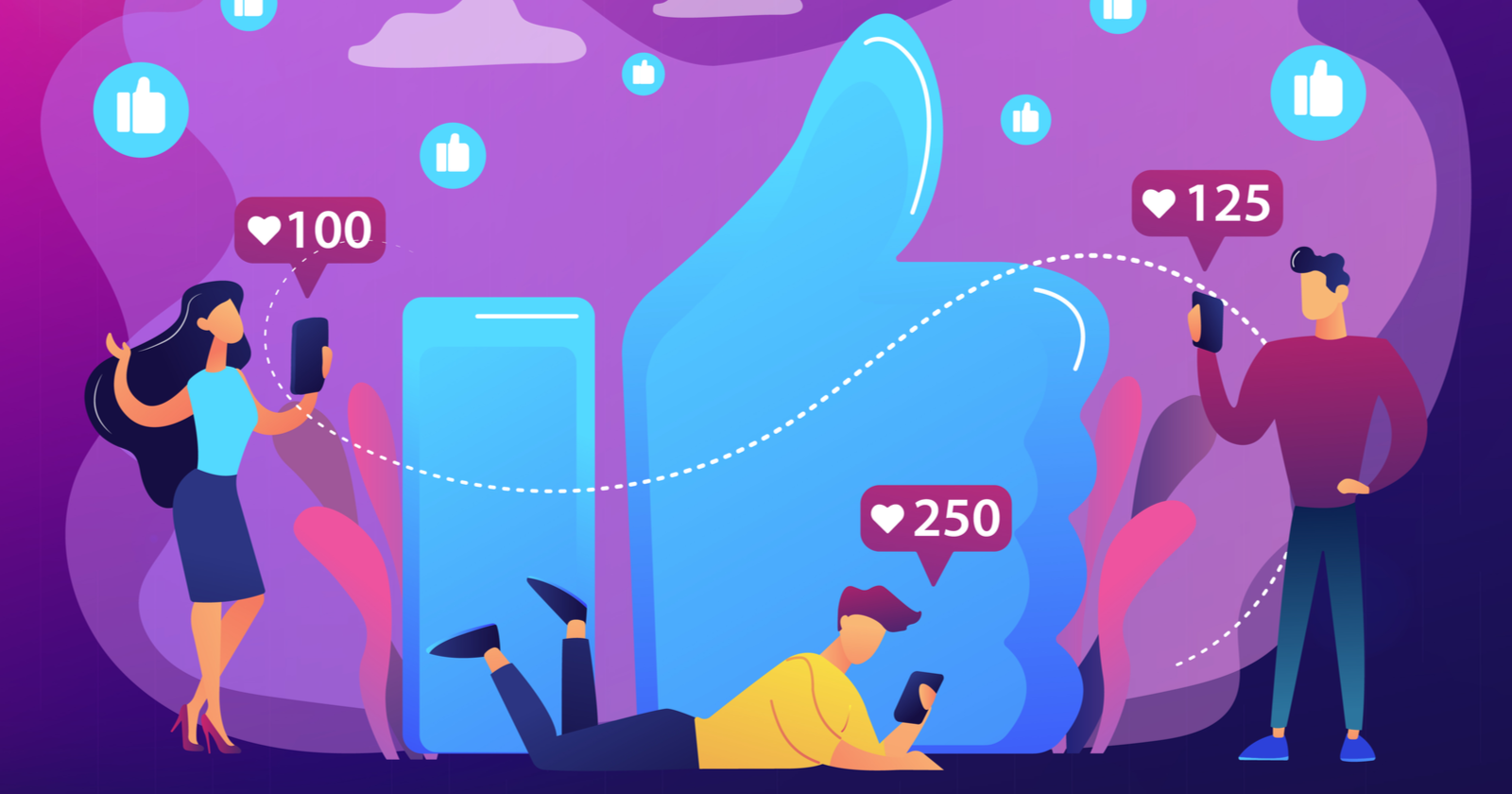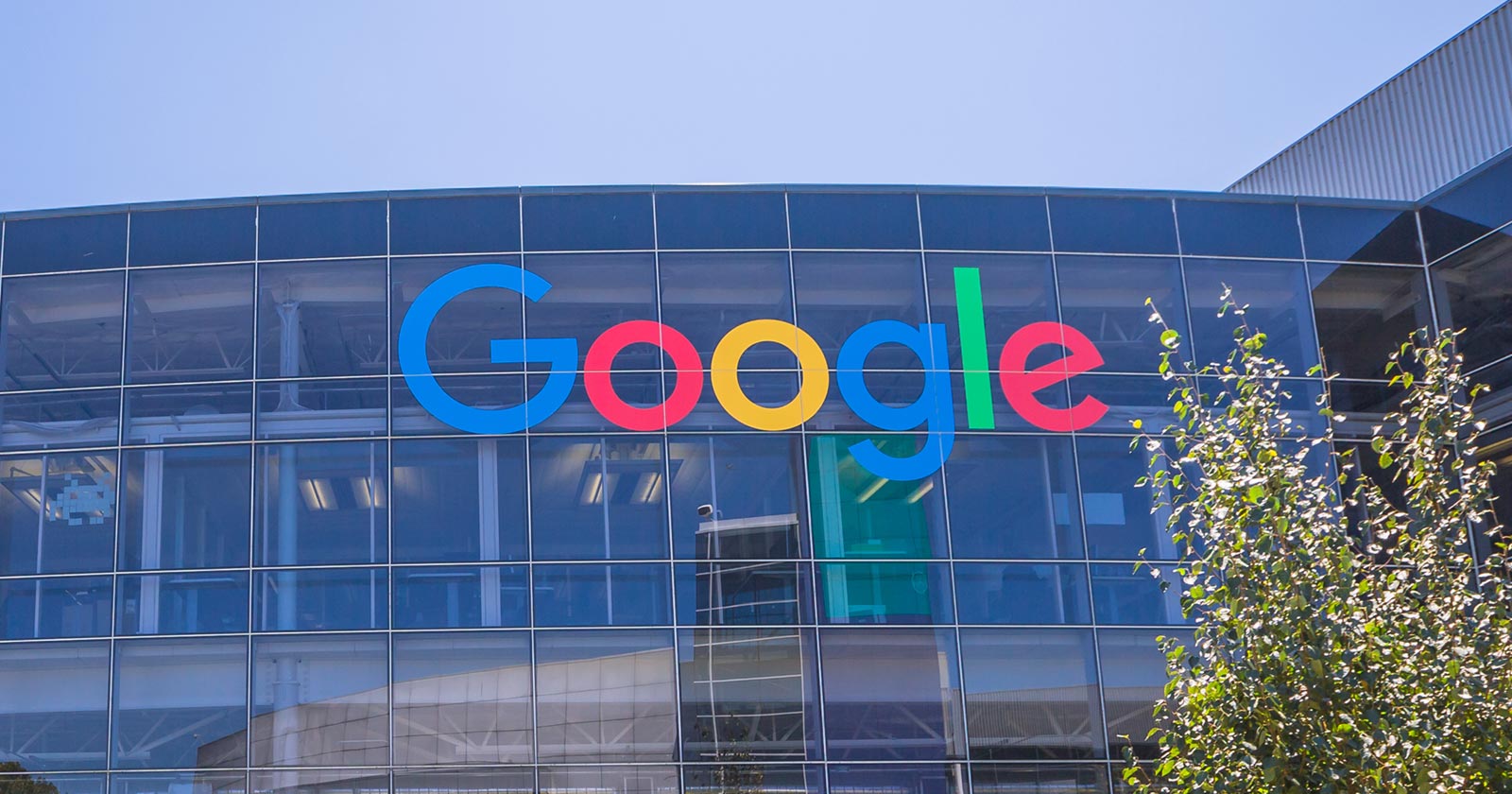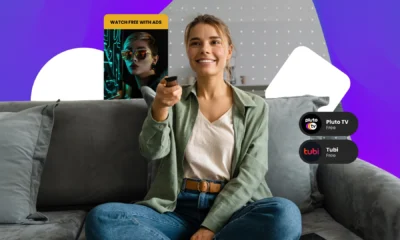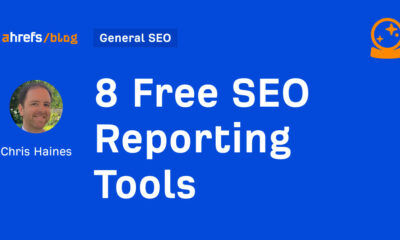SEO
Want To Get More Facebook Likes For Free? Here’s How

Do you want to grow your Facebook audience?
If you want to reach a portion of the billions of users around the world on Facebook, one of the first steps is to encourage them to like your Facebook page.
There is some debate about the value of Facebook audiences.
According to research by We Are Social, pages with fewer than 10,000 fans can expect up to 0.29% engagement with their page posts. Larger pages with more than 100,000 fans can expect up to 0.05% engagement.
The number of fans you have can affect a consumer’s perception of your business.
For example, what if your business has just over 100 fans and a competitor has just over 1,000 fans. A consumer comparing your companies may assume your competitor is more popular and thus, better.
In this article, you will find a specific way to drive more fans to your Facebook page without paying for Facebook Ads.
Facebook’s Invite To Follow Feature
As with most features, you may find this option on your Facebook page based on your page’s category and current audience size.
To see if this feature is available to your Facebook page, visit your page while logged in your personal profile.
Click on the three dots under your page’s cover photo and then click on the Invite to follow link.
On some pages, you may also see a blue Invite Friends button under the heading to Build Your Page Audience.
When you click on the Invite Friends button or Invite to follow link, select friends that you think would be interested in your page. There is a limit to the number of invitations you can send per day. Facebook states:
“To protect against spam, we limit the number of invites you can send daily. Invite up to 200 friends now, then come back tomorrow to send more.”
Once you’ve hit your limit, Facebook will tell you as much. Check back in a day or two to see if you can start inviting more people who have engaged with your posts.
You can also find the Invite option in the Facebook app. Go to your page while signed in to your personal account. Tap on the three dots and choose the Invite to Follow option.
Limitations Of The New Button
As mentioned, there is a limit to the number of invitations you can send per day.
If you hit your daily limit, Facebook will notify you. You will then have to wait a day or two before you can start sending out new invitations.
The Results?
The results of this approach depend on the people you are connected with on your personal Facebook account.
Will your friends be interested in your page just because of its content and like it? Or will they like it simply because you are acquaintances on Facebook?
In either circumstance, you are more likely to get a like from a friend via this method compared to inviting a complete stranger unfamiliar with you or your business.
The idea behind the button is to allow Facebook users to connect with pages they like using a word-of-mouth invitation option.
The alternative is to invest in a Facebook Ads campaign in an effort to build your Facebook audience by promoting your page’s content.
More Tips To Increase Facebook Likes
In addition to using the Invite button, here are additional ways you can grow your Facebook Page likes.
Ask And Answer Questions
People come to social media to engage with others. A great way to engage with your audience is to ask questions.
You can find inspiration for the best questions to ask on sites like Answer the Public and Quora.
In addition to asking your audience questions, search for questions asked on Facebook. Start by joining groups in your industry as your Facebook Page.
On your desktop browser, go to Facebook and switch accounts to use your Page.
 Screenshot by Author, December 2021
Screenshot by Author, December 2021Once you are signed in as your Page, go to Groups and search for groups in your industry. It will show the groups you can join with your Page in the results.
After you join some groups, look at their engagement potential. If there are lots of posts with comments, monitor new posts for questions you can answer as your Page.
Create A Group
In October 2020, Facebook shared data that showed 1.8 billion people use Facebook Groups. To capitalize on this, create a Group using your Page.
Once you are signed in as your Facebook Page, go to Groups and create a group. It should show your Page as the admin and first member as opposed to your personal profile.
After you have configured your Group settings, you can invite users who have liked your Page to your Group.
Be sure to have a few engagement-ready posts published in the group to help get new members talking and eventually invite their friends to join (based on your group settings).
That’s where you can get your new Page likes!
 Screenshot by Author, December 2021
Screenshot by Author, December 2021Use Video
As shown in a slide from the We Are Social research mentioned earlier, the engagement rate on Facebook Page video posts is 0.09%, which is higher than the overall engagement rate of posts.
Hence, you should look for ways to incorporate video into your Facebook marketing.
The more people you reach with your videos, the more new likes you have the potential to gain.
Popular videos on the Facebook app’s video tab have a Follow link next to the name of the Page that posted it.
 Screenshot by Author, November 2021
Screenshot by Author, November 2021Share Humanizing Content
If you really want to connect with audiences, start sharing content that focuses on the people your business touches.
Don’t just post about products and services if you want people to share your Facebook posts with their connections.
 Screenshot by Author, November 2021
Screenshot by Author, November 2021The more shares you receive for your content, the more potential new followers you will reach and likes you will gain for your Page.
Report Industry News
Become the source people can trust for the latest industry news. If you can be the first to report on breaking news, people will be more likely to share your Page posts with their networks.
This increases your Page’s reach and ability to get likes.
Is It Worth It To Buy Facebook Likes?
Although this article focuses on free methods of attracting Facebook likes, we wanted to address one of the top questions asked about growing a social media presence.
In short, it’s not always a good idea to buy likes.
Here’s why.
When you buy followers and likes for your Page, you’re not going to have fans that are genuinely interested in your business. They will provide little to no engagement with your content.
Facebook may interpret this as a Page that doesn’t create content that sparks the interest of its large volume of fans. Hence, it won’t have the reach of a post that has generated likes, comments, and shares.
More Resources:
Featured Image: Visual Generation/Shutterstock
SEO
Google Clarifies Vacation Rental Structured Data

Google’s structured data documentation for vacation rentals was recently updated to require more specific data in a change that is more of a clarification than it is a change in requirements. This change was made without any formal announcement or notation in the developer pages changelog.
Vacation Rentals Structured Data
These specific structured data types makes vacation rental information eligible for rich results that are specific to these kinds of rentals. However it’s not available to all websites. Vacation rental owners are required to be connected to a Google Technical Account Manager and have access to the Google Hotel Center platform.
VacationRental Structured Data Type Definitions
The primary changes were made to the structured data property type definitions where Google defines what the required and recommended property types are.
The changes to the documentation is in the section governing the Recommended properties and represents a clarification of the recommendations rather than a change in what Google requires.
The primary changes were made to the structured data type definitions where Google defines what the required and recommended property types are.
The changes to the documentation is in the section governing the Recommended properties and represents a clarification of the recommendations rather than a change in what Google requires.
Address Schema.org property
This is a subtle change but it’s important because it now represents a recommendation that requires more precise data.
This is what was recommended before:
“streetAddress”: “1600 Amphitheatre Pkwy.”
This is what it now recommends:
“streetAddress”: “1600 Amphitheatre Pkwy, Unit 6E”
Address Property Change Description
The most substantial change is to the description of what the “address” property is, becoming more descriptive and precise about what is recommended.
The description before the change:
PostalAddress
Information about the street address of the listing. Include all properties that apply to your country.
The description after the change:
PostalAddress
The full, physical location of the vacation rental.
Provide the street address, city, state or region, and postal code for the vacation rental. If applicable, provide the unit or apartment number.
Note that P.O. boxes or other mailing-only addresses are not considered full, physical addresses.
This is repeated in the section for address.streetAddress property
This is what it recommended before:
address.streetAddress Text
The full street address of your vacation listing.
And this is what it recommends now:
address.streetAddress Text
The full street address of your vacation listing, including the unit or apartment number if applicable.
Clarification And Not A Change
Although these updates don’t represent a change in Google’s guidance they are nonetheless important because they offer clearer guidance with less ambiguity as to what is recommended.
Read the updated structured data guidance:
Vacation rental (VacationRental) structured data
Featured Image by Shutterstock/New Africa
SEO
Google On Hyphens In Domain Names

Google’s John Mueller answered a question on Reddit about why people don’t use hyphens with domains and if there was something to be concerned about that they were missing.
Domain Names With Hyphens For SEO
I’ve been working online for 25 years and I remember when using hyphens in domains was something that affiliates did for SEO when Google was still influenced by keywords in the domain, URL, and basically keywords anywhere on the webpage. It wasn’t something that everyone did, it was mainly something that was popular with some affiliate marketers.
Another reason for choosing domain names with keywords in them was that site visitors tended to convert at a higher rate because the keywords essentially prequalified the site visitor. I know from experience how useful two-keyword domains (and one word domain names) are for conversions, as long as they didn’t have hyphens in them.
A consideration that caused hyphenated domain names to fall out of favor is that they have an untrustworthy appearance and that can work against conversion rates because trustworthiness is an important factor for conversions.
Lastly, hyphenated domain names look tacky. Why go with tacky when a brandable domain is easier for building trust and conversions?
Domain Name Question Asked On Reddit
This is the question asked on Reddit:
“Why don’t people use a lot of domains with hyphens? Is there something concerning about it? I understand when you tell it out loud people make miss hyphen in search.”
And this is Mueller’s response:
“It used to be that domain names with a lot of hyphens were considered (by users? or by SEOs assuming users would? it’s been a while) to be less serious – since they could imply that you weren’t able to get the domain name with fewer hyphens. Nowadays there are a lot of top-level-domains so it’s less of a thing.
My main recommendation is to pick something for the long run (assuming that’s what you’re aiming for), and not to be overly keyword focused (because life is too short to box yourself into a corner – make good things, course-correct over time, don’t let a domain-name limit what you do online). The web is full of awkward, keyword-focused short-lived low-effort takes made for SEO — make something truly awesome that people will ask for by name. If that takes a hyphen in the name – go for it.”
Pick A Domain Name That Can Grow
Mueller is right about picking a domain name that won’t lock your site into one topic. When a site grows in popularity the natural growth path is to expand the range of topics the site coves. But that’s hard to do when the domain is locked into one rigid keyword phrase. That’s one of the downsides of picking a “Best + keyword + reviews” domain, too. Those domains can’t grow bigger and look tacky, too.
That’s why I’ve always recommended brandable domains that are memorable and encourage trust in some way.
Read the post on Reddit:
Read Mueller’s response here.
Featured Image by Shutterstock/Benny Marty
SEO
Reddit Post Ranks On Google In 5 Minutes

Google’s Danny Sullivan disputed the assertions made in a Reddit discussion that Google is showing a preference for Reddit in the search results. But a Redditor’s example proves that it’s possible for a Reddit post to rank in the top ten of the search results within minutes and to actually improve rankings to position #2 a week later.
Discussion About Google Showing Preference To Reddit
A Redditor (gronetwork) complained that Google is sending so many visitors to Reddit that the server is struggling with the load and shared an example that proved that it can only take minutes for a Reddit post to rank in the top ten.
That post was part of a 79 post Reddit thread where many in the r/SEO subreddit were complaining about Google allegedly giving too much preference to Reddit over legit sites.
The person who did the test (gronetwork) wrote:
“…The website is already cracking (server down, double posts, comments not showing) because there are too many visitors.
…It only takes few minutes (you can test it) for a post on Reddit to appear in the top ten results of Google with keywords related to the post’s title… (while I have to wait months for an article on my site to be referenced). Do the math, the whole world is going to spam here. The loop is completed.”
Reddit Post Ranked Within Minutes
Another Redditor asked if they had tested if it takes “a few minutes” to rank in the top ten and gronetwork answered that they had tested it with a post titled, Google SGE Review.
gronetwork posted:
“Yes, I have created for example a post named “Google SGE Review” previously. After less than 5 minutes it was ranked 8th for Google SGE Review (no quotes). Just after Washingtonpost.com, 6 authoritative SEO websites and Google.com’s overview page for SGE (Search Generative Experience). It is ranked third for SGE Review.”
It’s true, not only does that specific post (Google SGE Review) rank in the top 10, the post started out in position 8 and it actually improved ranking, currently listed beneath the number one result for the search query “SGE Review”.
Screenshot Of Reddit Post That Ranked Within Minutes
Anecdotes Versus Anecdotes
Okay, the above is just one anecdote. But it’s a heck of an anecdote because it proves that it’s possible for a Reddit post to rank within minutes and get stuck in the top of the search results over other possibly more authoritative websites.
hankschrader79 shared that Reddit posts outrank Toyota Tacoma forums for a phrase related to mods for that truck.
Google’s Danny Sullivan responded to that post and the entire discussion to dispute that Reddit is not always prioritized over other forums.
Danny wrote:
“Reddit is not always prioritized over other forums. [super vhs to mac adapter] I did this week, it goes Apple Support Community, MacRumors Forum and further down, there’s Reddit. I also did [kumo cloud not working setup 5ghz] recently (it’s a nightmare) and it was the Netgear community, the SmartThings Community, GreenBuildingAdvisor before Reddit. Related to that was [disable 5g airport] which has Apple Support Community above Reddit. [how to open an 8 track tape] — really, it was the YouTube videos that helped me most, but it’s the Tapeheads community that comes before Reddit.
In your example for [toyota tacoma], I don’t even get Reddit in the top results. I get Toyota, Car & Driver, Wikipedia, Toyota again, three YouTube videos from different creators (not Toyota), Edmunds, a Top Stories unit. No Reddit, which doesn’t really support the notion of always wanting to drive traffic just to Reddit.
If I guess at the more specific query you might have done, maybe [overland mods for toyota tacoma], I get a YouTube video first, then Reddit, then Tacoma World at third — not near the bottom. So yes, Reddit is higher for that query — but it’s not first. It’s also not always first. And sometimes, it’s not even showing at all.”
hankschrader79 conceded that they were generalizing when they wrote that Google always prioritized Reddit. But they also insisted that that didn’t diminish what they said is a fact that Google’s “prioritization” forum content has benefitted Reddit more than actual forums.
Why Is The Reddit Post Ranked So High?
It’s possible that Google “tested” that Reddit post in position 8 within minutes and that user interaction signals indicated to Google’s algorithms that users prefer to see that Reddit post. If that’s the case then it’s not a matter of Google showing preference to Reddit post but rather it’s users that are showing the preference and the algorithm is responding to those preferences.
Nevertheless, an argument can be made that user preferences for Reddit can be a manifestation of Familiarity Bias. Familiarity Bias is when people show a preference for things that are familiar to them. If a person is familiar with a brand because of all the advertising they were exposed to then they may show a bias for the brand products over unfamiliar brands.
Users who are familiar with Reddit may choose Reddit because they don’t know the other sites in the search results or because they have a bias that Google ranks spammy and optimized websites and feel safer reading Reddit.
Google may be picking up on those user interaction signals that indicate a preference and satisfaction with the Reddit results but those results may simply be biases and not an indication that Reddit is trustworthy and authoritative.
Is Reddit Benefiting From A Self-Reinforcing Feedback Loop?
It may very well be that Google’s decision to prioritize user generated content may have started a self-reinforcing pattern that draws users in to Reddit through the search results and because the answers seem plausible those users start to prefer Reddit results. When they’re exposed to more Reddit posts their familiarity bias kicks in and they start to show a preference for Reddit. So what could be happening is that the users and Google’s algorithm are creating a self-reinforcing feedback loop.
Is it possible that Google’s decision to show more user generated content has kicked off a cycle where more users are exposed to Reddit which then feeds back into Google’s algorithm which in turn increases Reddit visibility, regardless of lack of expertise and authoritativeness?
Featured Image by Shutterstock/Kues
-

 WORDPRESS6 days ago
WORDPRESS6 days agoTurkish startup ikas attracts $20M for its e-commerce platform designed for small businesses
-

 PPC7 days ago
PPC7 days ago31 Ready-to-Go Mother’s Day Messages for Social Media, Email, & More
-

 PPC6 days ago
PPC6 days agoA History of Google AdWords and Google Ads: Revolutionizing Digital Advertising & Marketing Since 2000
-

 MARKETING5 days ago
MARKETING5 days agoRoundel Media Studio: What to Expect From Target’s New Self-Service Platform
-

 SEO5 days ago
SEO5 days agoGoogle Limits News Links In California Over Proposed ‘Link Tax’ Law
-

 MARKETING6 days ago
MARKETING6 days agoUnlocking the Power of AI Transcription for Enhanced Content Marketing Strategies
-

 SEARCHENGINES6 days ago
SEARCHENGINES6 days agoGoogle Search Results Can Be Harmful & Dangerous In Some Cases
-
SEARCHENGINES5 days ago
Daily Search Forum Recap: April 12, 2024















You must be logged in to post a comment Login